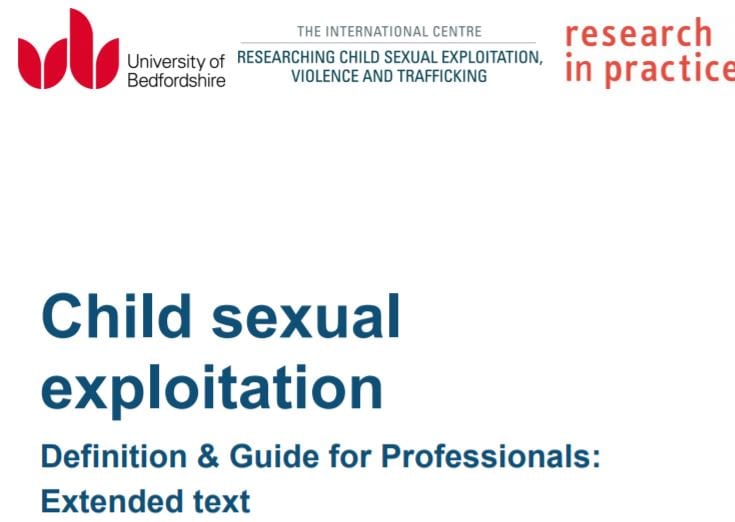
Child sexual exploitation Definition & Guide for Professionals
This work was commissioned by the Department for Education (DfE) and is the extended text from which the DfE document ‘Child Sexual Exploitation: Definition and a guide for practitioners, local leaders and decision makers working to protect children from child sexual exploitation’ has been drawn. This can be viewed at www.gov.uk
The document outlines the new civil definition of child sexual exploitation, developed by the Home Office and DfE, together with an overview of our current understanding of the issue and an evidence-informed set of principles for responding. This extended version of the ‘guide’ provides professionals1 with further background information about child sexual exploitation and offers additional commentary around some of the complexities of practically responding to the issue.
The document should be read in conjunction with Working together to safeguard children: A guide to inter-agency working to safeguard and promote the welfare of children (hereafter referred to as Working Together), that provides the statutory framework for responding to child sexual exploitation and all other forms of abuse. The content of this document does not in any way supersede the statutory provisions of Working Together, but rather considers some of the nuances and challenges of applying its requirements and principles to this particular form of abuse.
This extended version of the ‘guide’ draws on the existing evidence base to identify issues that have proved challenging to address in practice and to draw out lessons learnt in relation to this. It does not seek to provide readers with a ‘step-by-step’ approach to addressing child sexual exploitation, but instead provides a high-level framework for building a locally informed enhanced response that concurrently addresses prevention, and responses to victimhood and perpetration, and supports the exercise of ‘professional curiosity’ within this.
Although the document focuses on child sexual exploitation, many of the principles outlined herein hold relevance for responding to other forms of exploitation, abuse and vulnerability in adolescence and readers are encouraged to consider the interconnectedness of these issues and the transferability of learning between them.
Click here to read full report.
